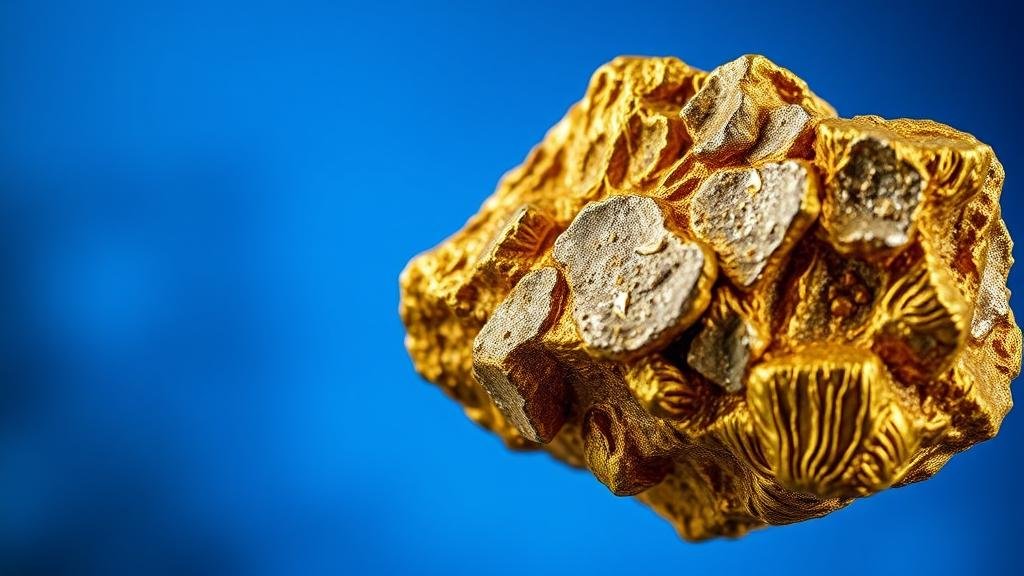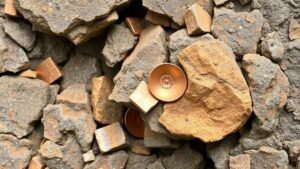The Role of Oxidized Minerals in Indicating Gold Veins
The Role of Oxidized Minerals in Indicating Gold Veins
The exploration and extraction of gold require a comprehensive understanding of geological processes. One critical aspect of gold exploration is the identification of oxidized minerals that indicate the presence of gold veins. This article delves into the nature of oxidized minerals, their significance in gold deposits, and how geoscientists utilize them in gold exploration.
Understanding Oxidized Minerals
Oxidized minerals are minerals that have undergone oxidation, a chemical process that reacts with oxygen, converting them into different forms. Common oxidized minerals found in gold-bearing areas include iron oxides such as hematite and goethite, as well as secondary minerals like limonite.
- Hematite: Often found in sedimentary iron ores, hematite can indicate the presence of other minerals associated with gold.
- Goethite: This mineral typically forms in soil environments and can signify alteration processes that may accompany gold deposition.
Connection Between Oxidized Minerals and Gold Veins
Oxidized minerals are not merely indicators of alteration but also play a key role in the geological processes that form gold veins. As mineral deposits undergo metamorphism or hydrothermal processes, the presence of certain oxidized minerals can suggest potential gold locations.
One example is the Carlin Trend in Nevada, USA, known for its significant gold deposits. This region showcases how oxidized structures can lead to gold mineralization. interaction between oxygen-rich fluids and primary sulfide minerals can result in the formation of gold-bearing oxides.
Identifying Gold Deposits Through Oxidized Minerals
Geoscientists employ various methods to identify oxidized minerals that could indicate gold deposits. Techniques such as sampling, geochemical analysis, and geophysical methods are utilized to pinpoint areas of interest.
- Geochemical Analysis: Soil and rock samples are analyzed for trace elements that correlate with gold occurrences. Elevated levels of arsenic and antimony often accompany gold in oxidized environments.
- Geophysical Methods: Techniques like induced polarization can reveal the conductive properties of oxidized materials, assisting in the identification of underlying gold veins.
Case Studies and Real-World Applications
Numerous case studies highlight the effectiveness of using oxidized minerals to locate gold veins. In Australia, the discovery of gold deposits in the Super Pit, Kalgoorlie, was significantly aided by identifying gossanous outcrops rich in oxidized minerals. The presence of iron oxides was a strong indicator of underlying gold resources.
In Brazil, the Vila Nova project has showcased how leveraging the information provided by oxidized mineralization can enhance exploration techniques. The presence of goethite and hematite in surface outcrops led to successful drilling programs that uncovered substantial gold reserves.
Challenges and Limitations
While the relationship between oxidized minerals and gold veins is significant, it is not without challenges. presence of oxidized minerals may not always guarantee gold deposits. False positives can arise, leading explorations to unproductive areas.
Also, environmental factors and geological history can alter mineral compositions, making it difficult to establish a direct correlation between oxidized minerals and gold veins. So, it is crucial for geoscientists to utilize a multidisciplinary approach in exploration.
Actionable Takeaways
Understanding the role of oxidized minerals in indicating gold veins is essential for effective gold exploration. Here are some actionable takeaways:
- Incorporate geochemical and geophysical methods in mineral exploration to enhance detection rates.
- Study the geological history of areas to understand the impact of environmental factors on mineral composition.
- Focus on advanced analytical techniques to improve accuracy in identifying oxidized minerals associated with gold.
To wrap up, oxidized minerals serve as crucial indicators for locating gold veins. Their study not only aids in uncovering new gold deposits but also enhances the efficiency of exploration strategies in the mining industry.



